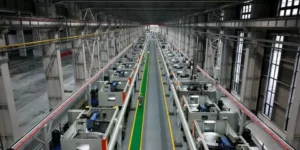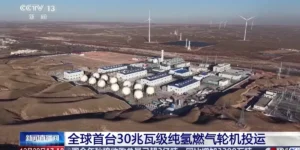How Do Coal Power Plants Work? Unveiling the Mechanics of Conventional Electricity Generation

Coal power plants have played a pivotal role in supplying electricity for decades. These massive facilities are engineering marvels, converting the energy stored in coal into electricity that powers our homes, industries, and cities. But how do coal power plants work? In this detailed exploration, we’ll demystify the intricate processes behind coal-fired electricity generation, from the fuel source to the transmission lines.
1. The Energy Source: Coal
At the heart of every coal power plant is the energy-rich fuel source – coal. This fossil fuel, typically mined from deep underground or surface mines, is predominantly carbon and is known for its energy density. Coal power plants have historically been the backbone of electricity generation because coal is abundant and cost-effective.
2. The Combustion Process
The fundamental principle behind coal power plants is the combustion process. Coal is pulverized into a fine powder, often as small as talcum, to maximize its surface area. This finely ground coal is then blown into a combustion chamber, along with a stream of air. The heat generated by combusting the coal transforms water into steam.
3. Steam Power Generation
Steam is the workhorse of coal power plants. The high-temperature, high-pressure steam produced by the combustion of coal is used to turn a turbine. This turbine is connected to a generator, and as the steam passes over the turbine blades, it causes the turbine to spin.
4. Electricity Generation
The spinning turbine converts the kinetic energy from the steam into mechanical energy, which is then further transformed into electrical energy. The generator is equipped with coils of wire that rotate within a magnetic field, creating an electric current – the electricity we use in our homes.
5. Environmental Control Systems
Modern coal power plants employ sophisticated environmental control systems to address concerns related to air quality and emissions. These systems often include scrubbers to remove sulfur dioxide, electrostatic precipitators to capture particulate matter, and catalytic converters to reduce nitrogen oxide emissions.
6. Heat Recovery
The energy conversion in coal power plants is not 100% efficient. After the steam passes over the turbine, it must be cooled and condensed back into water before returning to the combustion chamber. This cooling process often utilizes a cooling tower or a natural water source like a river.
7. Transmission and Distribution
The electricity generated in a coal power plant is initially in the form of high-voltage alternating current (AC). To distribute electricity to homes and businesses, it must be transformed into lower-voltage AC, usually through a series of substations. These lower voltages are safer for distribution and can travel over long distances without significant losses.
8. Grid Connection
The electricity from coal power plants is fed into a regional electrical grid. This grid interconnects with other power plants, including those using renewable energy sources like wind and solar, ensuring a reliable supply of electricity to consumers.
9. Challenges and Concerns
While coal power plants have provided consistent and affordable electricity, they are not without challenges. The combustion of coal releases greenhouse gases, contributing to climate change. Additionally, there are concerns about the environmental impact of coal mining and the disposal of coal combustion byproducts.
10. The Future of Coal Power
The energy landscape is evolving, with a growing focus on cleaner and more sustainable alternatives. Many countries are phasing out or retrofitting coal power plants to reduce emissions and transition to greener energy sources. Nevertheless, coal power continues to play a role in electricity generation in some regions.
11. The Role of Control Rooms
Within a coal power plant, there’s a central control room that oversees every aspect of the operation. Skilled operators monitor various parameters, such as temperature, pressure, and energy output. Advanced computer systems help optimize the combustion process, enhancing efficiency and safety.
12. Ash and Emission Management
The combustion of coal generates ash and emissions. Coal power plants are equipped with systems to capture these byproducts. The ash is often collected in silos and later transported to disposal sites. Gases and emissions are filtered and treated to reduce environmental impact.
13. Generation Capacity
The generation capacity of coal power plants varies significantly. Larger facilities can produce several gigawatts of electricity, while smaller, localized plants are designed to serve specific industries or regions.
14. Grid Balancing
Coal power plants provide a stable and consistent source of electricity. They play a crucial role in balancing the electrical grid, especially during periods of high demand or when renewable sources like wind and solar are less predictable.
15. Impact on the Environment
Coal power plants are associated with environmental challenges. The combustion of coal releases carbon dioxide, a major contributor to climate change. Additionally, coal mining and ash disposal can have adverse impacts on local ecosystems.

Coal power plant in Europe, image source: Unsplash
16. Transition to Cleaner Technologies
In response to environmental concerns, many countries are transitioning away from coal power plants or retrofitting them with cleaner technologies. This shift includes the adoption of carbon capture and storage (CCS) and a greater reliance on renewable energy sources.
17. The Global Landscape
The presence and role of coal power plants vary from one region to another. Some countries are actively reducing their reliance on coal, while others continue to use it as a significant energy source. The global energy landscape is in transition, with a growing emphasis on sustainable and environmentally friendly solutions.
18. The Human Element
Operating a coal power plant requires a dedicated workforce of engineers, technicians, and operators. These skilled professionals ensure the safe and efficient operation of the facility. They are responsible for routine maintenance, monitoring of equipment, and troubleshooting any issues that may arise.
19. Fuel Diversity
While there is a global shift towards cleaner energy sources, coal power plants still contribute to fuel diversity in the energy sector. Having a mix of energy sources, including coal, enhances energy security and can provide a reliable power supply, especially during times of high demand.
20. Innovations and Retrofits
In response to environmental concerns, there have been significant innovations in coal power plant technology. Newer plants incorporate technologies like ultra-supercritical steam cycles and fluidized bed combustion to improve efficiency and reduce emissions. Additionally, older plants are being retrofitted with emission control systems to make them more environmentally friendly.

Coal power plant in Germany, image source: Unsplash
21. Energy Transition Challenges
The transition away from coal power is not without challenges. In regions heavily reliant on coal, there are economic and employment considerations to address. Governments and industries are working on strategies to support affected communities and workers during this energy shift.
22. Carbon Capture and Storage (CCS)
One promising technology in the realm of coal power is CCS. This technology captures carbon dioxide emissions from the combustion process and stores them underground to prevent their release into the atmosphere. CCS has the potential to significantly reduce the environmental impact of coal power.
23. The Role of Research
Ongoing research and development in the energy sector continue to explore ways to make coal power more sustainable. This includes improving the efficiency of combustion processes, reducing emissions, and finding new uses for coal byproducts.
24. Global Collaboration
The challenges associated with coal power are not limited to a single country. They are global in scope. As a result, there is a growing emphasis on international cooperation to address environmental concerns and share best practices for cleaner and more sustainable energy generation.
25. Sustainable Transitions
The future of coal power is inextricably linked to sustainable transitions. While some regions are reducing coal’s role in their energy mix, others are working on making it a more environmentally responsible part of their energy portfolios. These transitions reflect the broader shift toward cleaner and more sustainable energy sources.
Conclusion: The Evolving Role of Coal Power
The operation of coal power plants is a complex and dynamic process, and their role in the global energy landscape is undergoing significant change. While coal power has been instrumental in providing electricity for generations, the focus on reducing environmental impact and transitioning to cleaner energy solutions is driving innovation and transformation. Understanding the mechanics of coal power plants and the challenges they face is essential as we work towards a future where energy generation is not only reliable but also sustainable and environmentally responsible.






